XA-38 Grizzly & XSB2D Destroyer ...
Fri Jan 24, 2014 11:20 am
Originally posted by Mark Allen. Images restored on 11/2/2018. Scott WRG Editor
Per request. Two good looking airplanes (IMHO)
Beechcraft XA-38 Grizzly
Per Wiki:
The Beechcraft XA-38 Grizzly was a United States ground attack aircraft, fitted with a forward-firing 75 mm cannon to attack heavily armored targets. The first prototype flew on 7 May 1944 but after testing it became obvious it would not be ready for the projected invasion of Japan, and furthermore it used engines required by the B-29 Superfortress — which had priority - and so it was canceled after two prototypes had been completed.
The United States Army Air Forces awarded the Beech Aircraft Corporation a contract in December 1942 for two prototypes for their Model 28 "Destroyer". The requirement was for a powerful ground attack aircraft to replace the Douglas A-20 Havoc, with the ability to hit "hardened" targets like tanks and bunkers. This capability was achieved through a 75 mm cannon with 20 rounds, mounted in a fixed position on the nose as well as two .50 cal (12.7 mm) M2 Browning machine guns firing forward. Defensive armament consisted of remotely-controlled ventral and dorsal turrets, each armed with twin .50 cal (12.7 mm) machine guns. There were to be two crew members, a pilot and an observer/gunner in the rear cabin, using periscope sights to aim the guns.
On 7 May 1944, Beech test pilot Vern Carstens flew the XA-38 on its maiden flight from the company's Wichita airfield. The aircraft proved satisfactory in all respects and better than expected in some, including top speed.
During testing, the XA-38 prototypes were flown by U.S. Army pilots and serviced by military personnel, proving to be reliable and establishing a high level of serviceability.
The armament proved especially effective and had it not been for wartime priorities shifting in 1944, the aircraft would most likely have been ordered in quantity[citation needed], although the B-29 had priority for the Wright R-3350 engines. Instead, one prototype was scrapped and the other, intended for the USAF Museum, had an unknown fate.
General characteristics:
Crew: 2
Length: 51 ft 9 in (15.77 m)
Wingspan: 67 ft 4 in (20.52 m)
Height: 15 ft 6 in (4.72 m)
Wing area: 626 ft² (58.15 m²)
Empty weight: 22,480 lb (10,197 kg)
Max. takeoff weight: 35,265 lb (15,996 kg)
Powerplant: 2 × Wright R-3350-43 air-cooled radial engine, 2,300 hp (1,716 kW) each
Performance
Maximum speed: 370 mph (322 knots, 595 km/h) at 17,000 ft (5,180 m)
Range: 1,625 miles (1,413 nmi, 2,615 km)
Service ceiling: 29,000 ft (8,840 m)
Rate of climb: 2,600 ft/min (13.2 m/s)
Armament
Guns:
1 × T15E1 75 mm cannon (20 rounds)
6 × 50 caliber (12.7 mm) M2 Browning machine guns (2 forward-facing, 2 in ventral turret, 2 in dorsal turret)
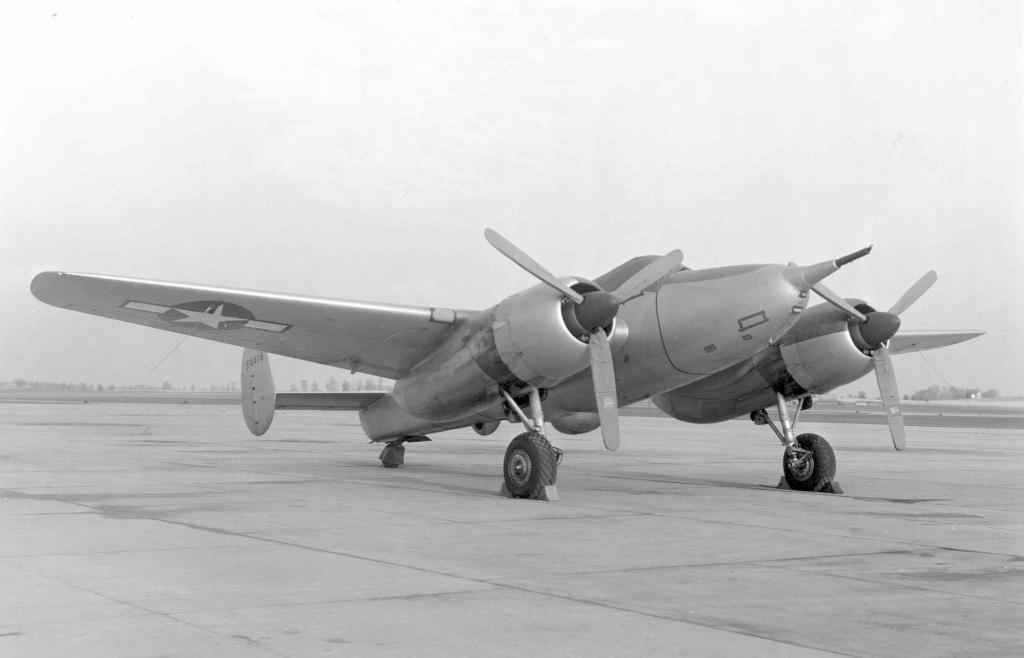
Image 01: Beechcraft XA-38 (SN 43-14406). (U.S. Air Force photo)
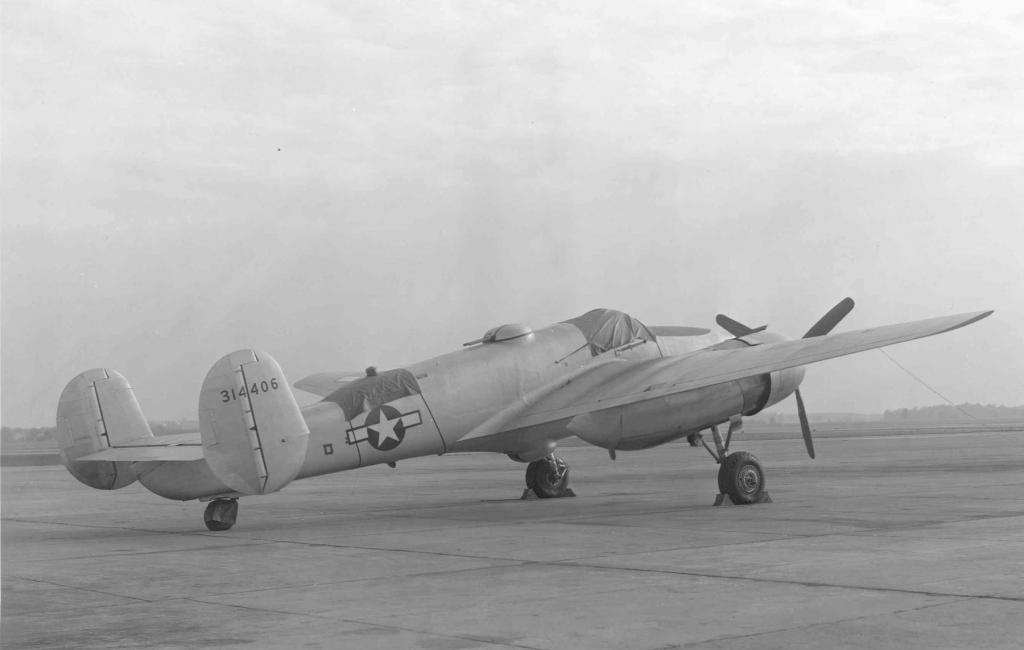
Image 02: Beechcraft XA-38 (SN 43-14406). (U.S. Air Force photo)
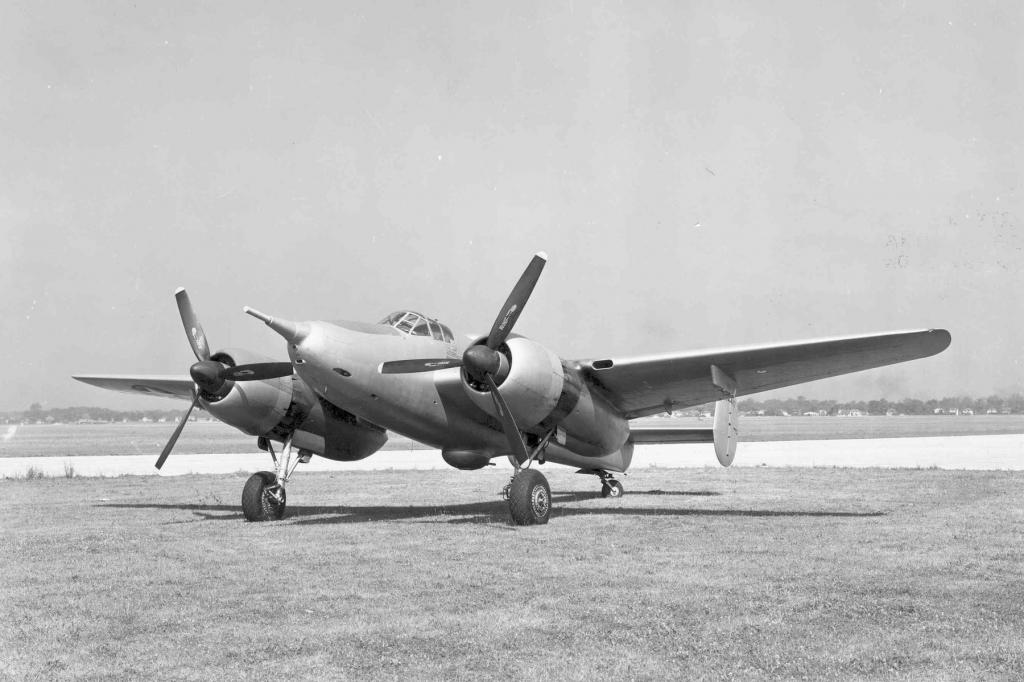
Image 03: Beechcraft XA-38 (SN 43-14407, the second and last XA-38 built). (U.S. Air Force photo)
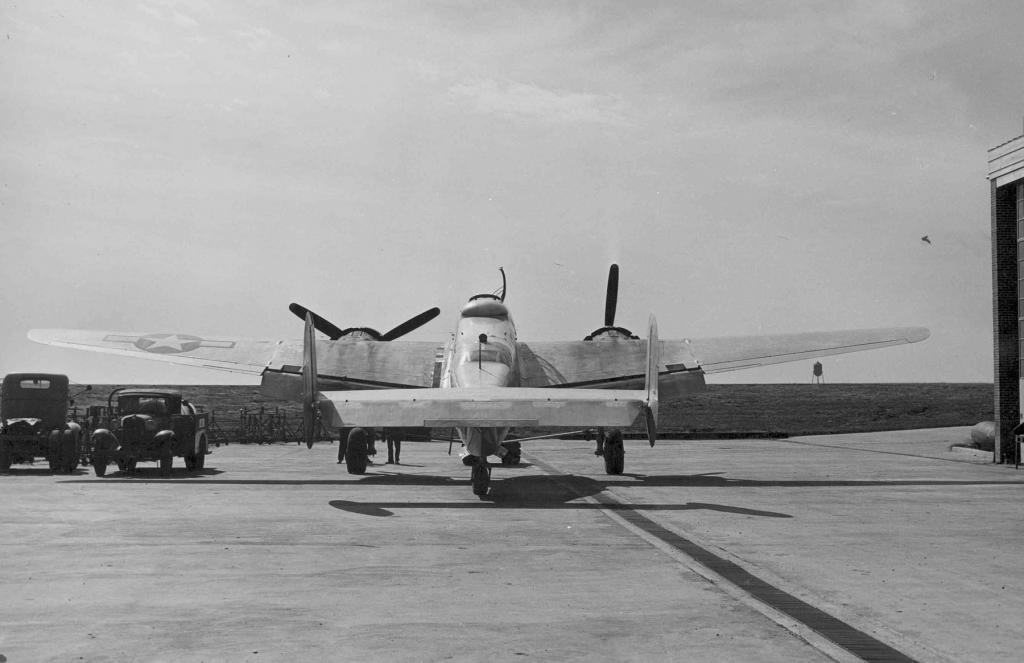
Image 04: Aft view of Beechcraft XA-38 (SN 43-14406). (U.S. Air Force photo)
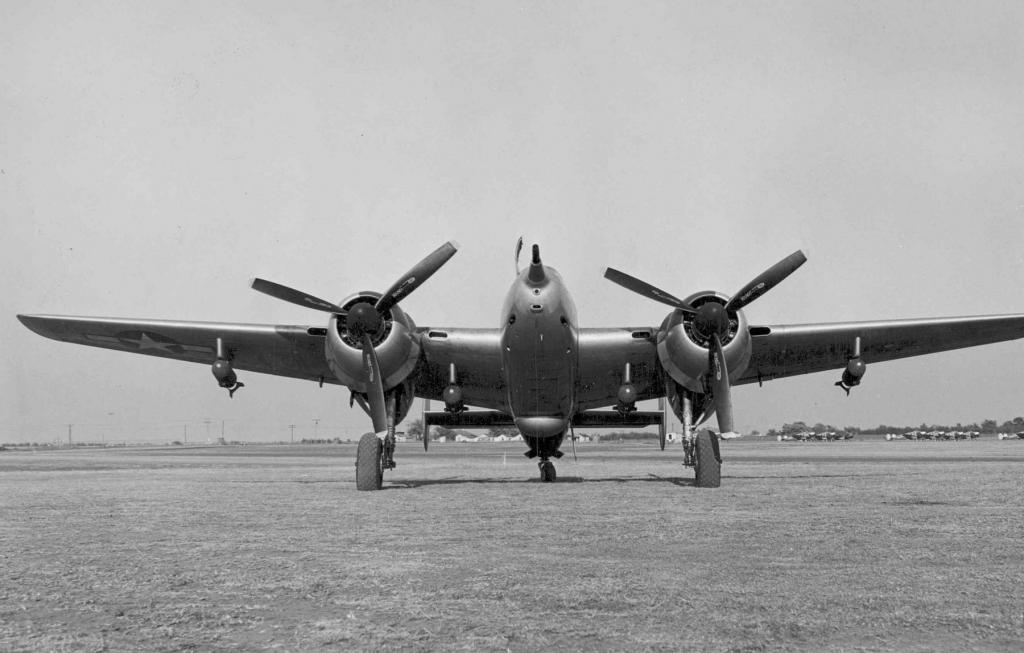
Image 05: Front view of Beechcraft XA-38 with bombs loaded on four mount points. (U.S. Air Force photo)
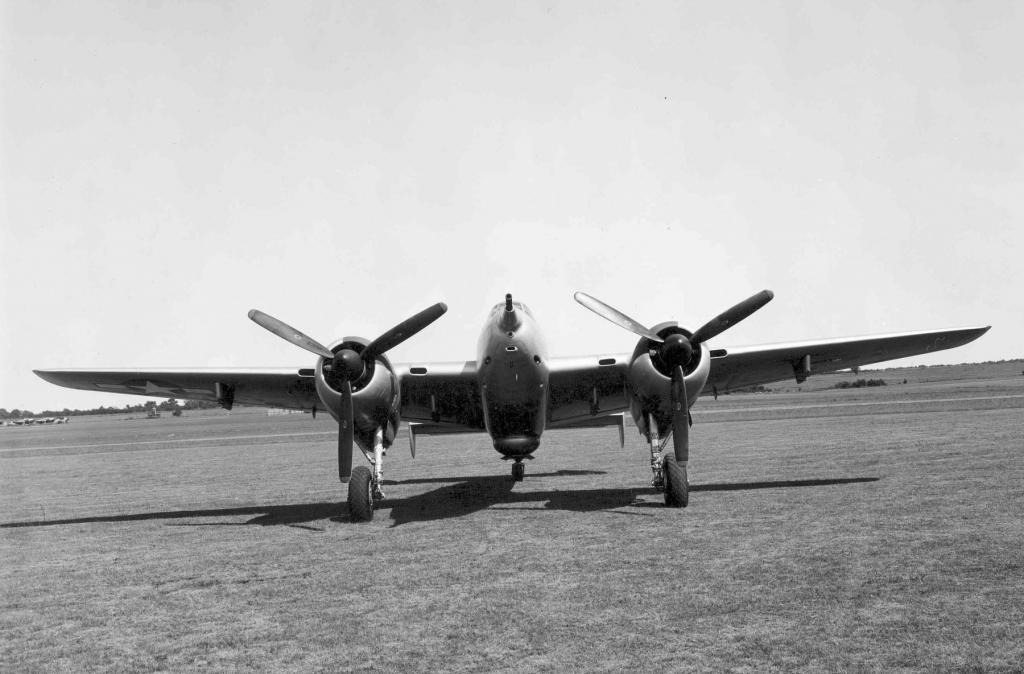
Image 06: Front view of Beechcraft XA-38 (SN 43-14406) with external bomb racks installed. (U.S. Air Force photo)
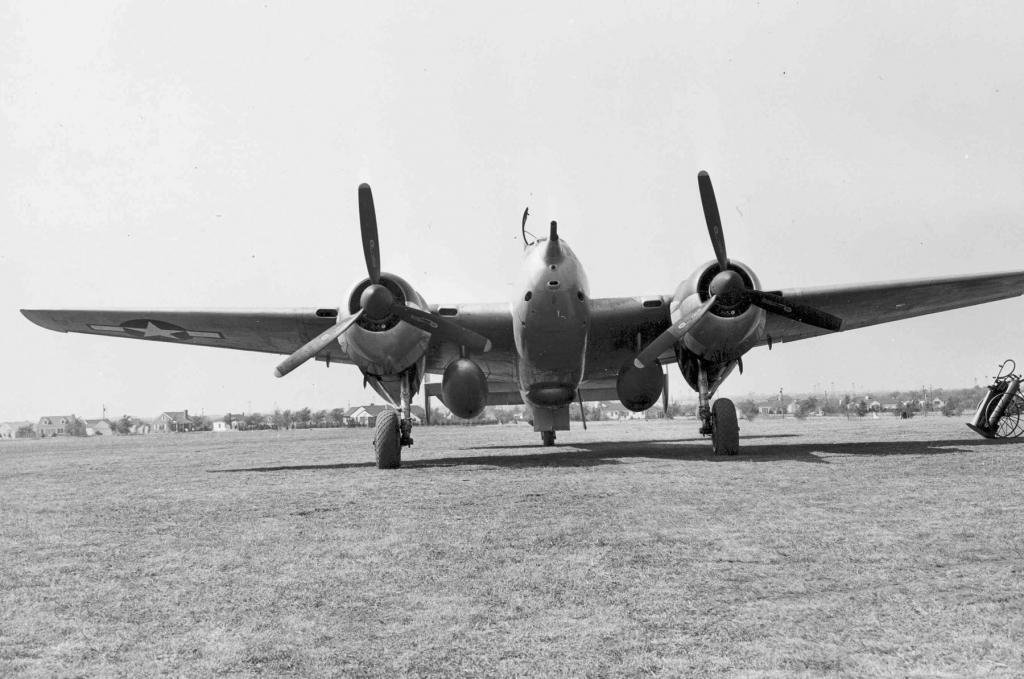
Image 07: Front view of Beechcraft XA-38 with external fuel tanks mounted. (U.S. Air Force photo)
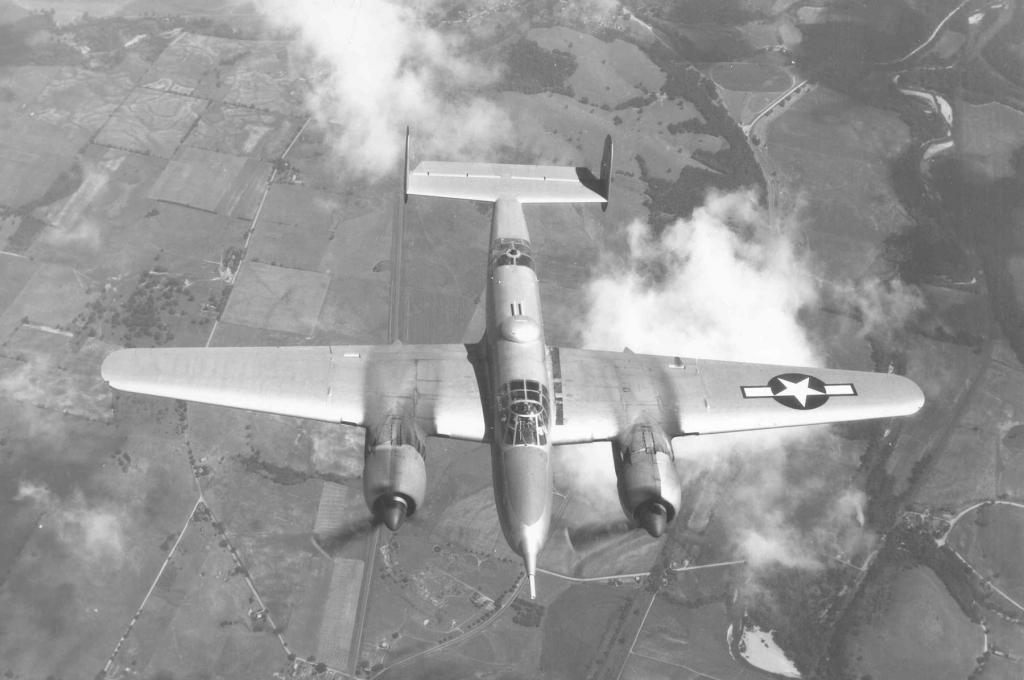
Image 08: Beechcraft XA-38 (SN 43-14407) in flight. (U.S. Air Force photo)
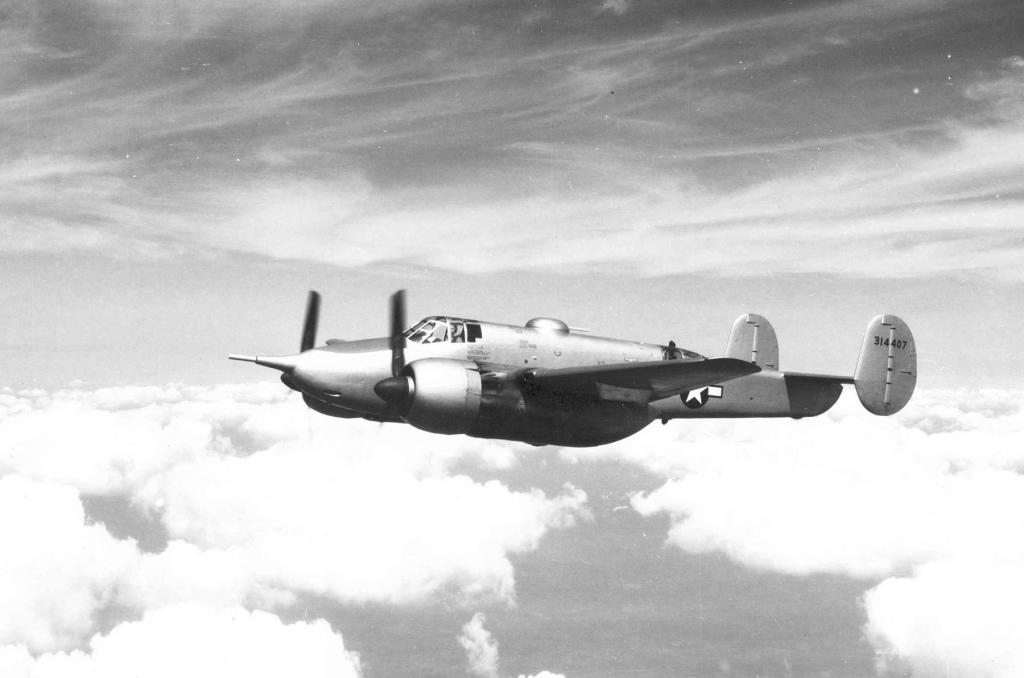
Image 09: Beechcraft XA-38 (SN 43-14407) in flight. (U.S. Air Force photo)

Image 10: Front view of Beechcraft XA-38 (SN 43-14407) in flight. (U.S. Air Force photo)
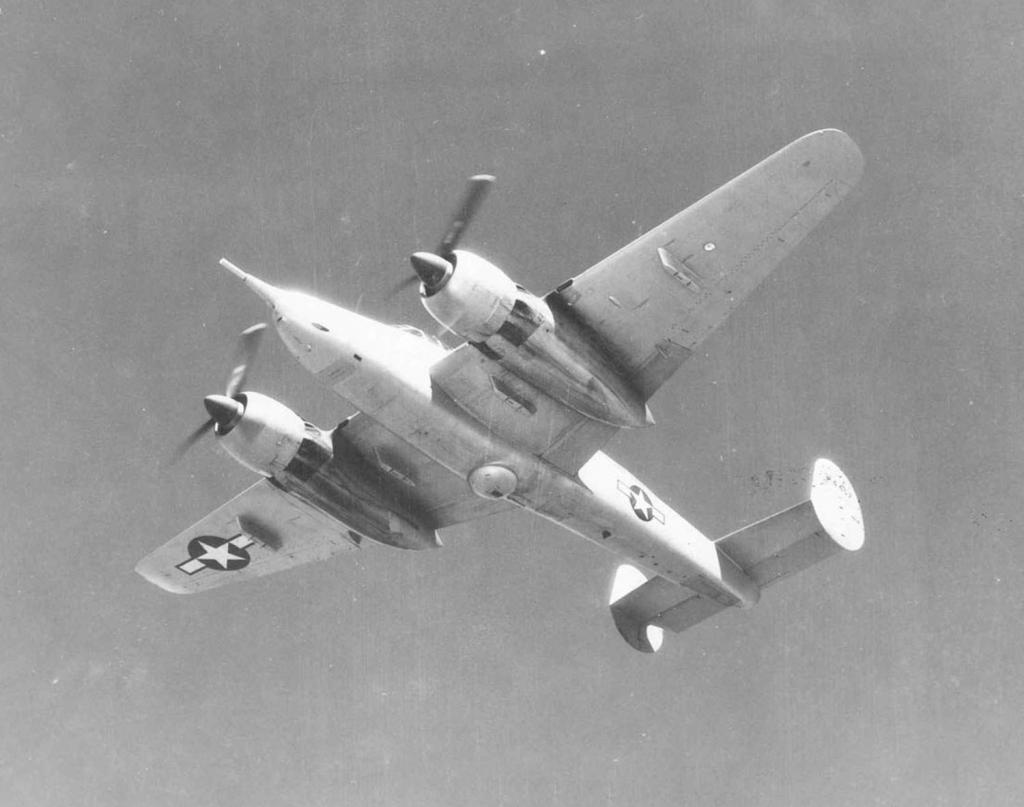
Image 11: Bottom view of Beechcraft XA-38 (SN 43-14407) in flight. (U.S. Air Force photo)

Image 12: Beechcraft XA-38 during ground vibration tests. Tests were set-up to determine natural frequencies excited during engine operation. (U.S. Air Force photo)
Douglas XSB2D-1 & BTD Destroyer
Per Wiki:
On 20 June 1941, the United States Navy placed an order with the Douglas Aircraft Company for two prototypes of a new two-seat dive bomber to replace both the Douglas SBD Dauntless and the new Curtiss SB2C Helldiver, designated XSB2D-1. The resulting aircraft, designed by a team led by Ed Heinemann, was a large single-engined mid-winged monoplane. It had a laminar flow gull-wing, and unusually for a carrier-based aircraft of the time, a tricycle undercarriage. It was fitted with a bomb bay and underwing racks for up to 4,200 lb (1,900 kg), while defensive armament consisted of two wing-mounted 20 mm (0.79 in) cannon and two remote-controlled turrets, each with two .50 in (12.7 mm) machine guns.[1]
The prototype first flew on 8 April 1943, demonstrating excellent performance, being much faster and carrying nearly double the bombload of the Helldiver, and orders for 358 SB2D-1s quickly followed. The U.S. Navy changed its requirements, however, wanting single-seat carrier-based torpedo/dive bombers without defensive turrets, and Douglas reworked the SB2D by removing the turrets and second crewman, while adding more fuel and armor, producing the BTD-1 Destroyer. The orders for SB2Ds were converted to BTD-1s, with the first BTD flying on 5 March 1944
The first production BTD-1s were completed in June 1944. By the time Japan surrendered in August 1945, only 28 aircraft had been delivered, and production was cancelled, along with other aircraft types that had been designed from the start as single-seaters, such as the Martin AM Mauler.[3] None saw combat action. In any event, Heinemann and his team were already working on developing the single-seat BT2D that became the Douglas A-1 Skyraider.
General characteristics:
Crew: One
Length: 38 ft 7 in (11.76 m)
Wingspan: 45 ft 0 in (13.72 m)
Height: 13 ft 7 in (4.14 m)
Empty weight: 11,561 lb (5,244 kg)
Max. takeoff weight: 19,000 lb (8,618 kg)
Powerplant: 1 × Wright R-3350-14 Cyclone 18 radial engine, 2,300 hp (1,715 kW)
Performance
Maximum speed: 334 mph (290 kn, 538 km/h) at 16,100 ft (4,900 m)
Service ceiling: 23,600 ft (7,195 m)
Armament
2 × 20 mm AN/M2 (.79 in) cannons, 200 RPG
Up to 3,200 lb (1,450 kg) of bombs in the bomb bay or two 1,947 lb Torpedos
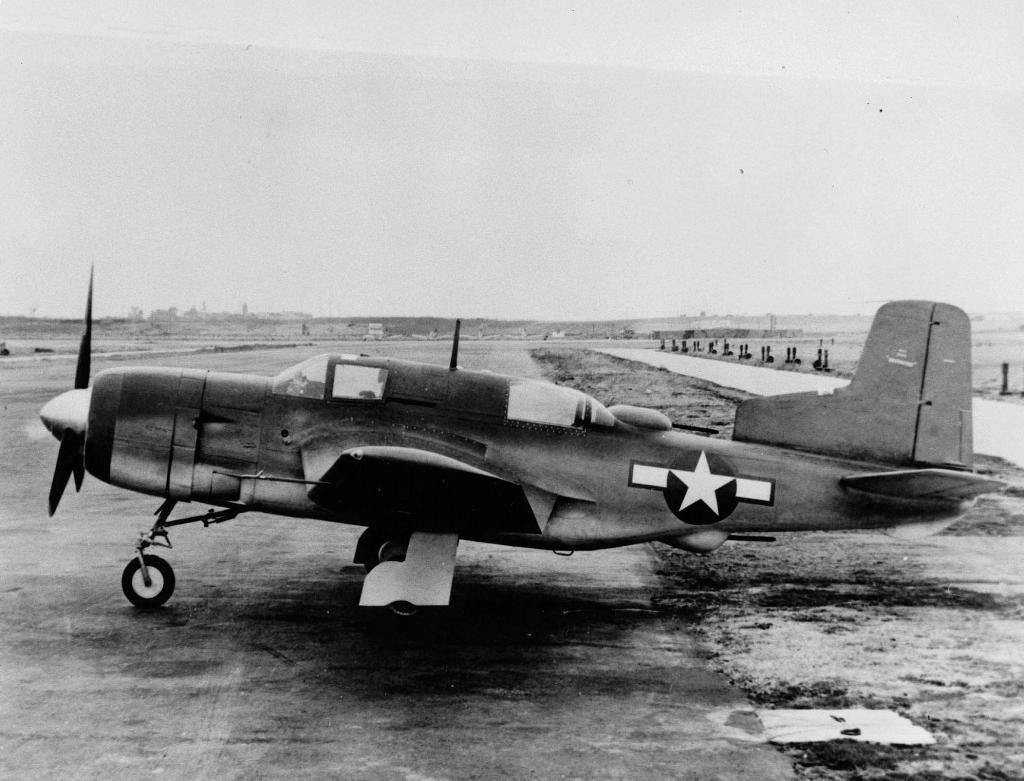
Douglas XSB2D Destroyer left side
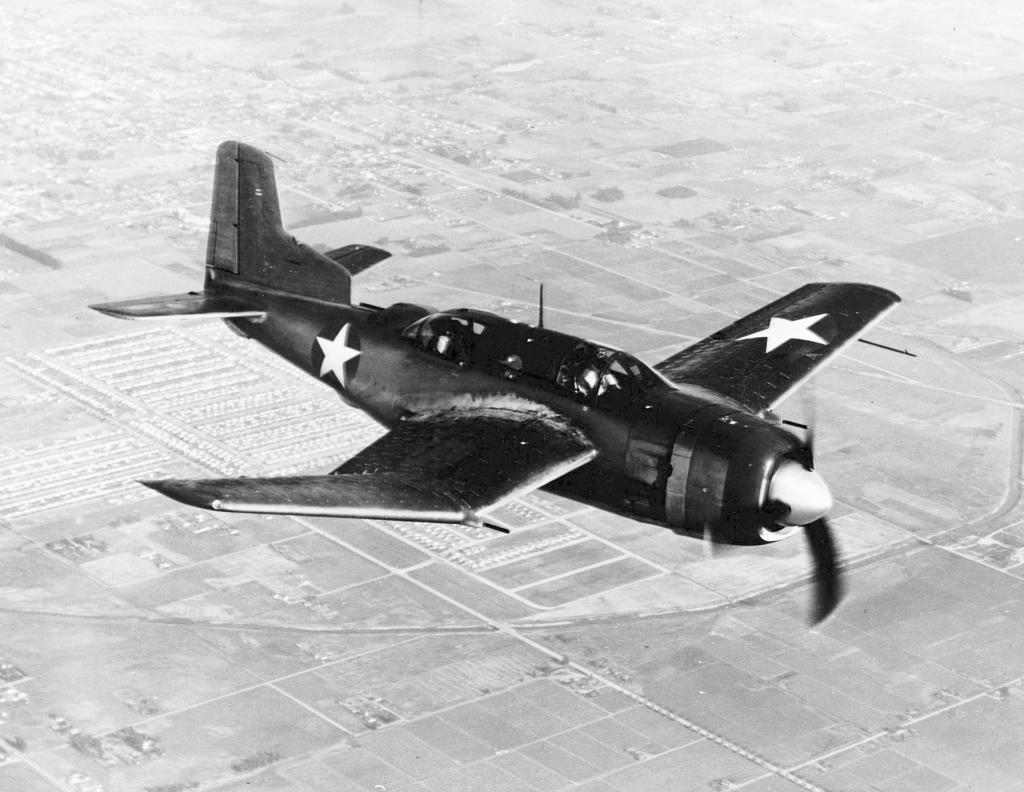
Douglas XSB2D Destroyer in flight

Douglas XSB2D Destroyer from below

Douglas XSB2D landing configuration
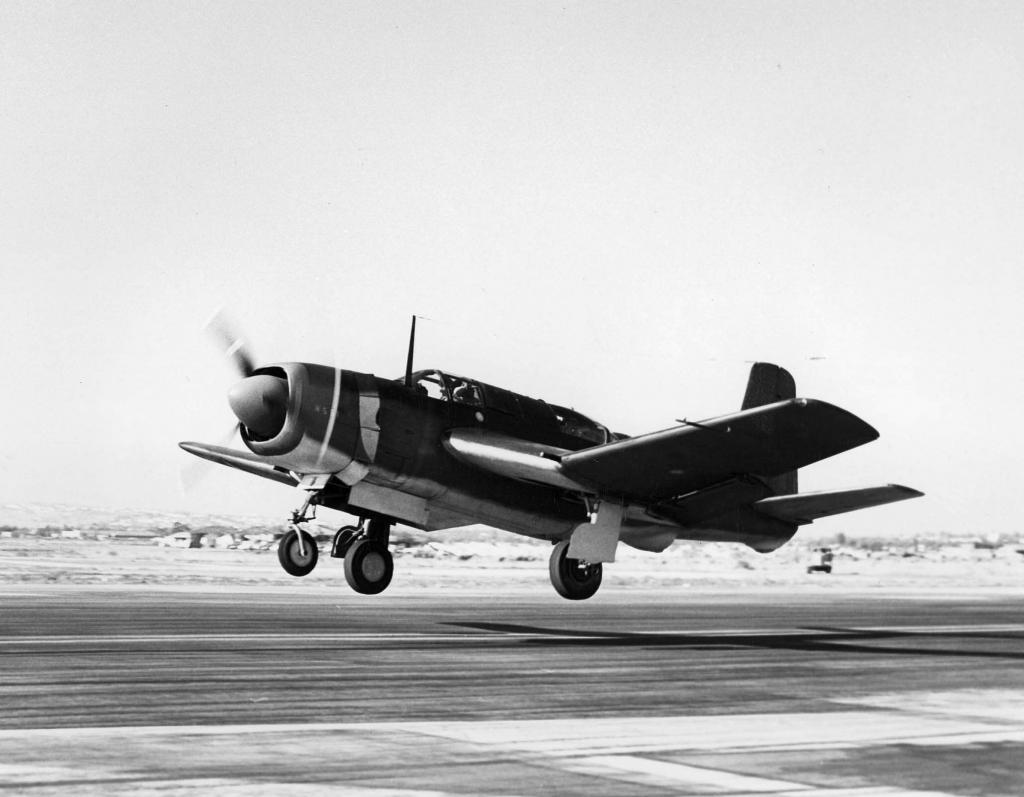
Douglas XSB2D Destroyer landing
BTD's
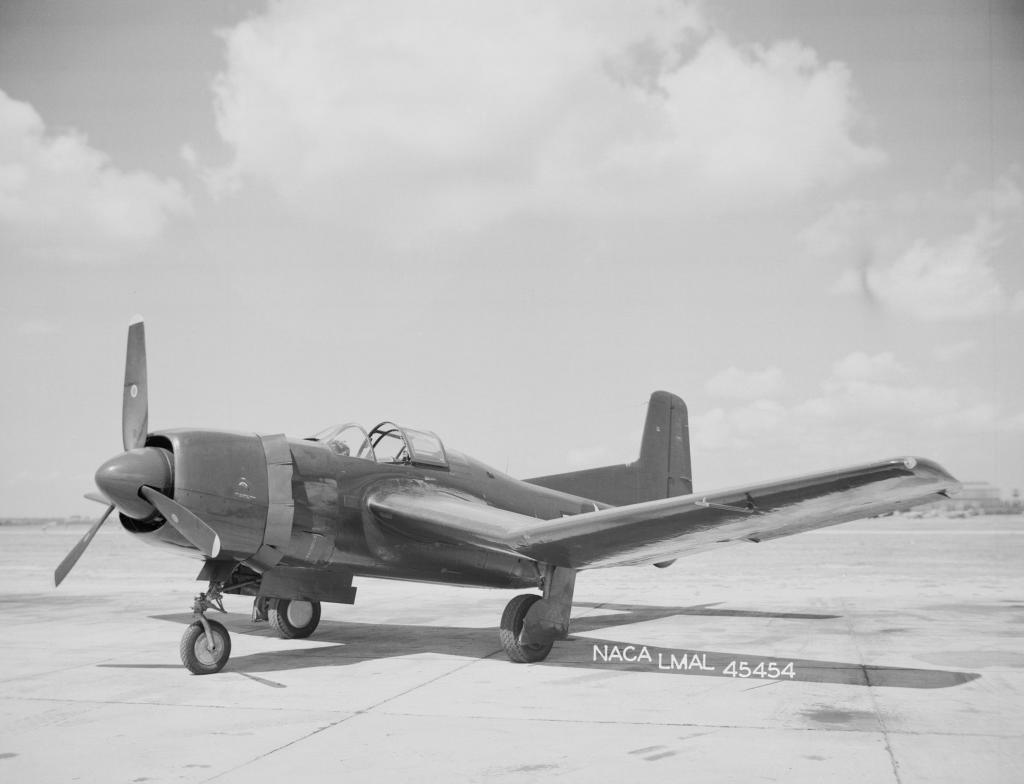
Douglas_BTD-1_NACA_Aug_1945
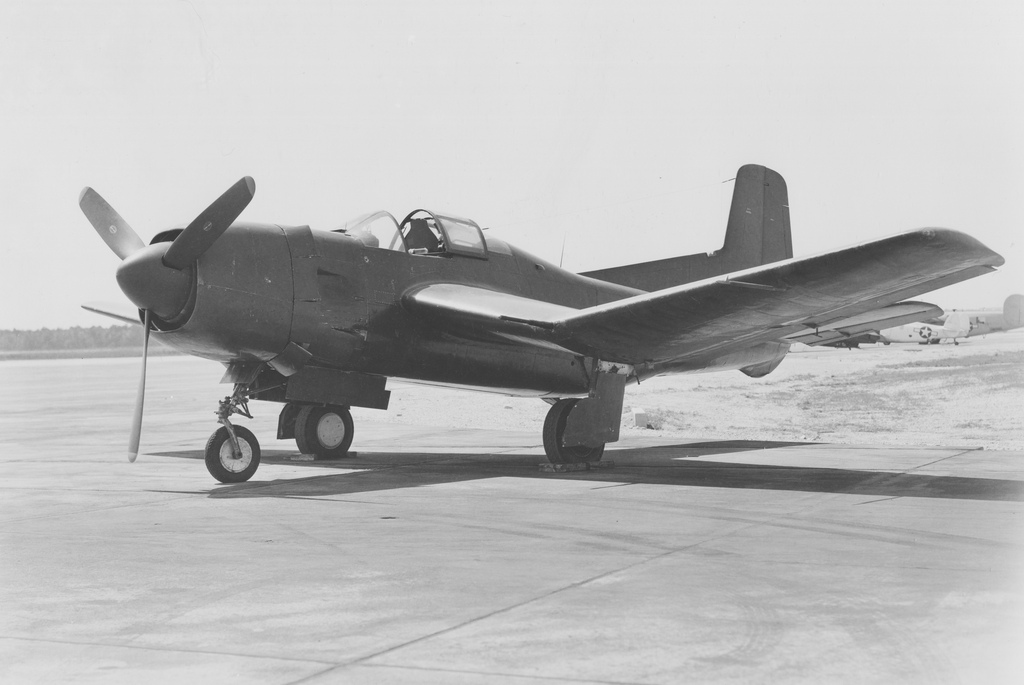
USN 408624 - BTD-1 BUNO 04970 - PAX RIVER - 10 MAY 1946

USN 408571 - BTD-1 BUNO 04963 AT PAX RIVER - 26 JUN 1944

USN 408623 - BTD-1 BUNO 04970 - PAX RIVER - 10 MAY 1946
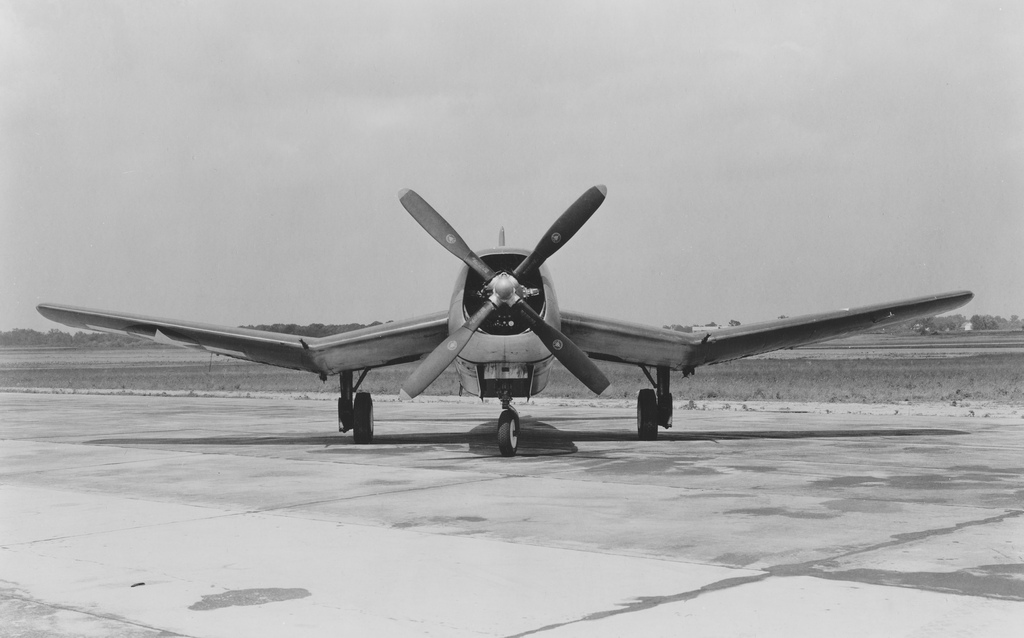
USN 408570 - BTD-1 BUNO 04963 - PAX RIVER - 26 JUN 1944
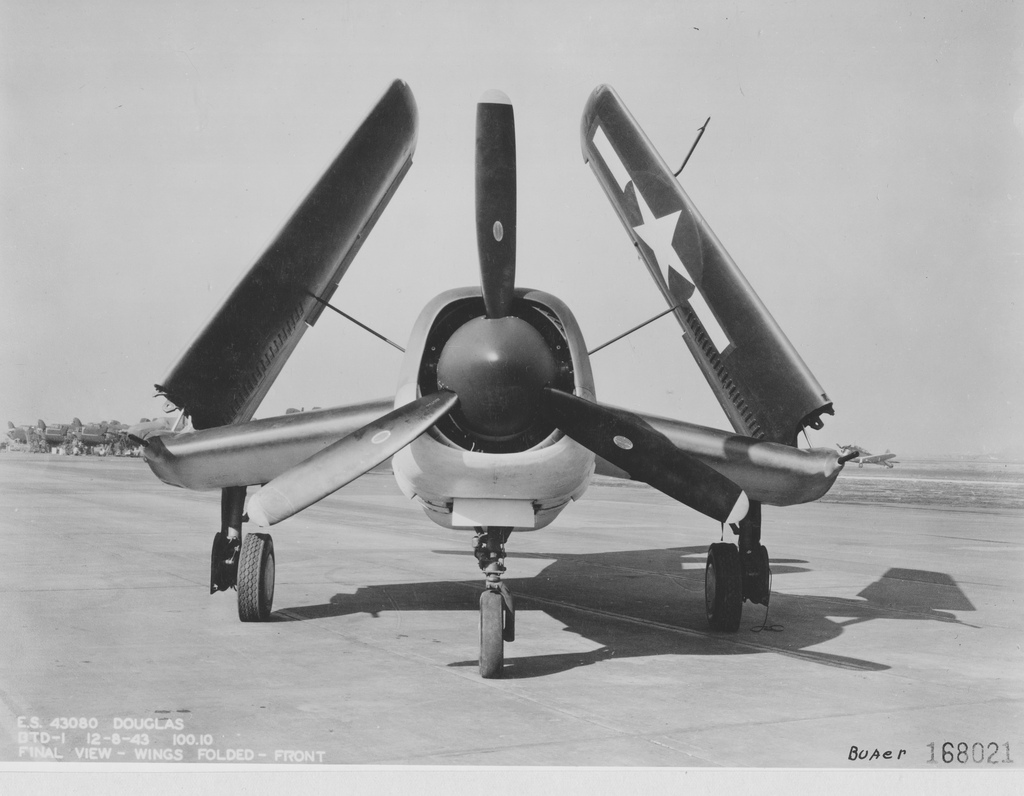
USN 168021 - BTD-1 - 8 DEC 1943
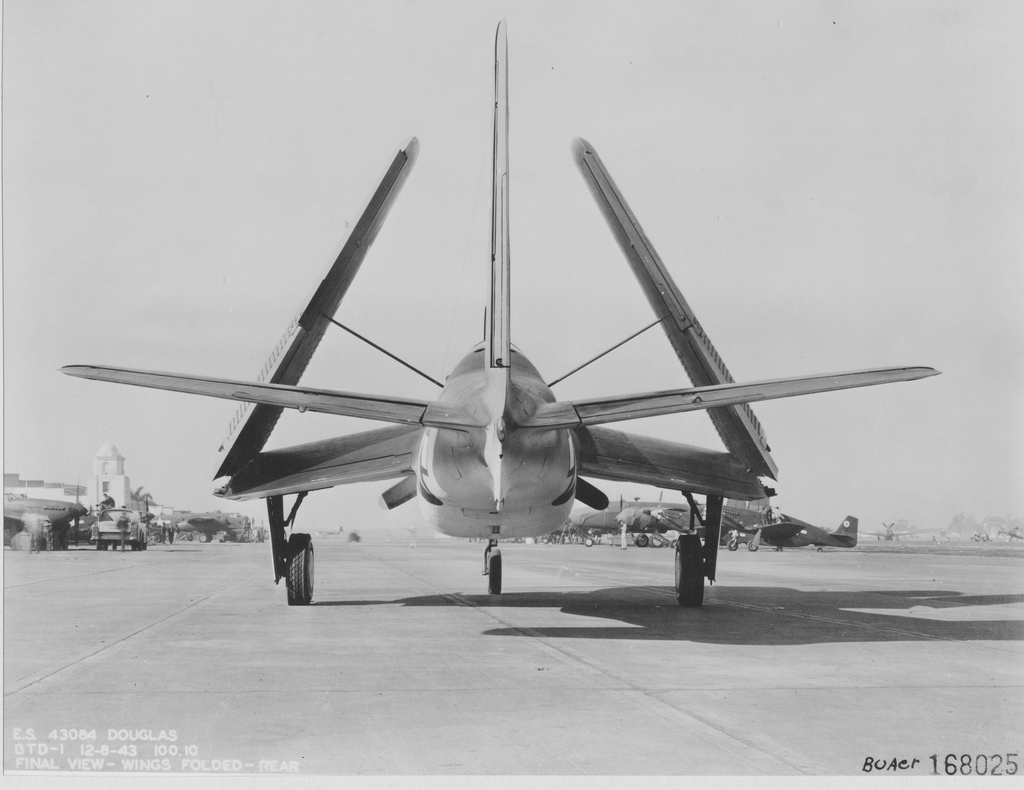
USN 168025 - BTD-1 - 8 DEC 1943

USN 248126 - BTD-1 BUNO 04963 AT PAX RIVER 4 SEP 1944

USN 248127 - BTD-1 BUNO 04963 AT PAX RIVER - 4 SEP 1944
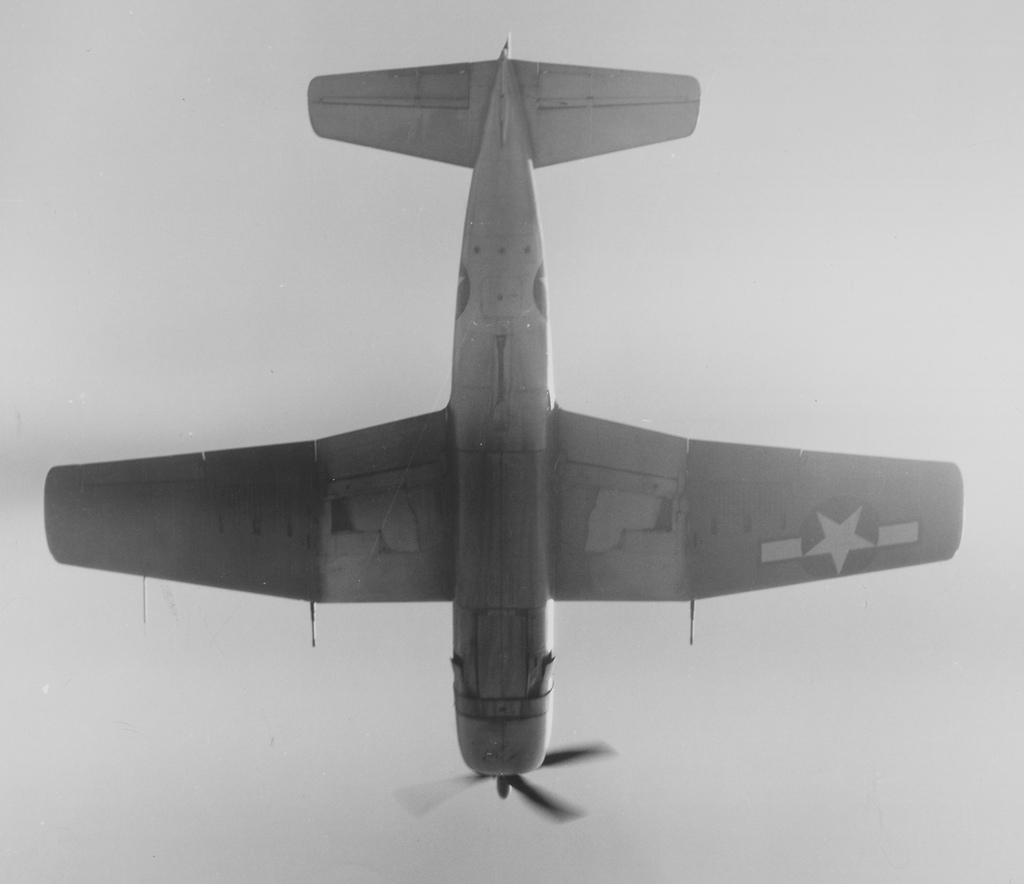
USN 240148 - BTD-1 AT PAX RIVER - 25 JUL 1944
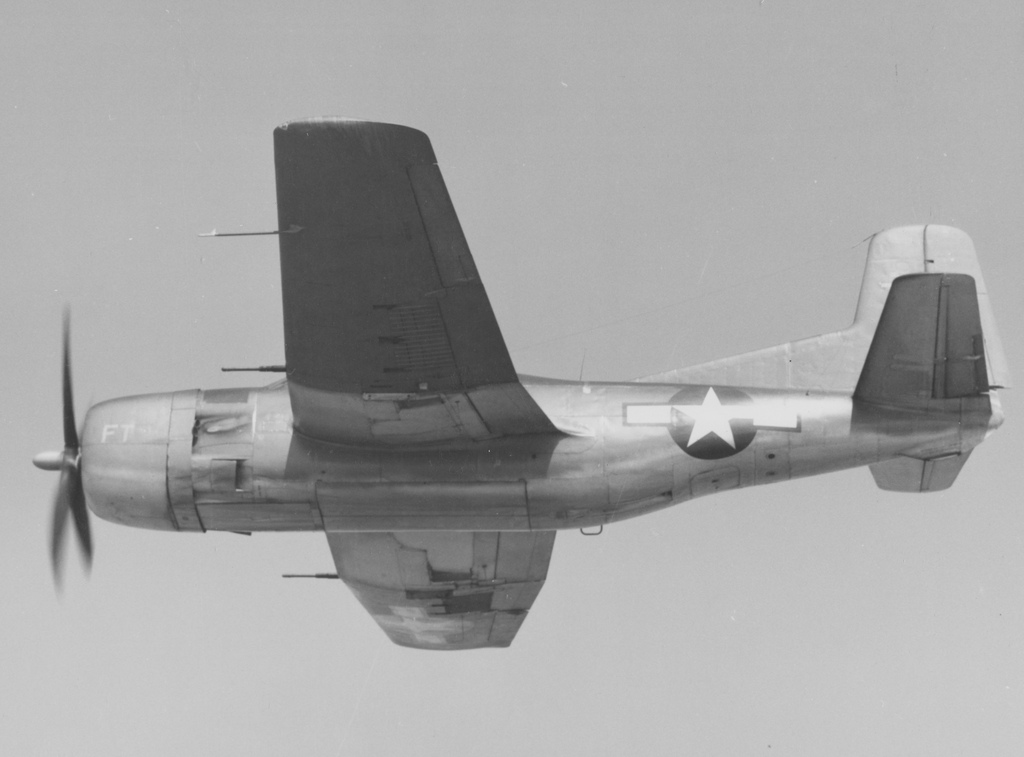
USN 240147 - BTD-1 AT PAX RIVER - 25 JUL 1944
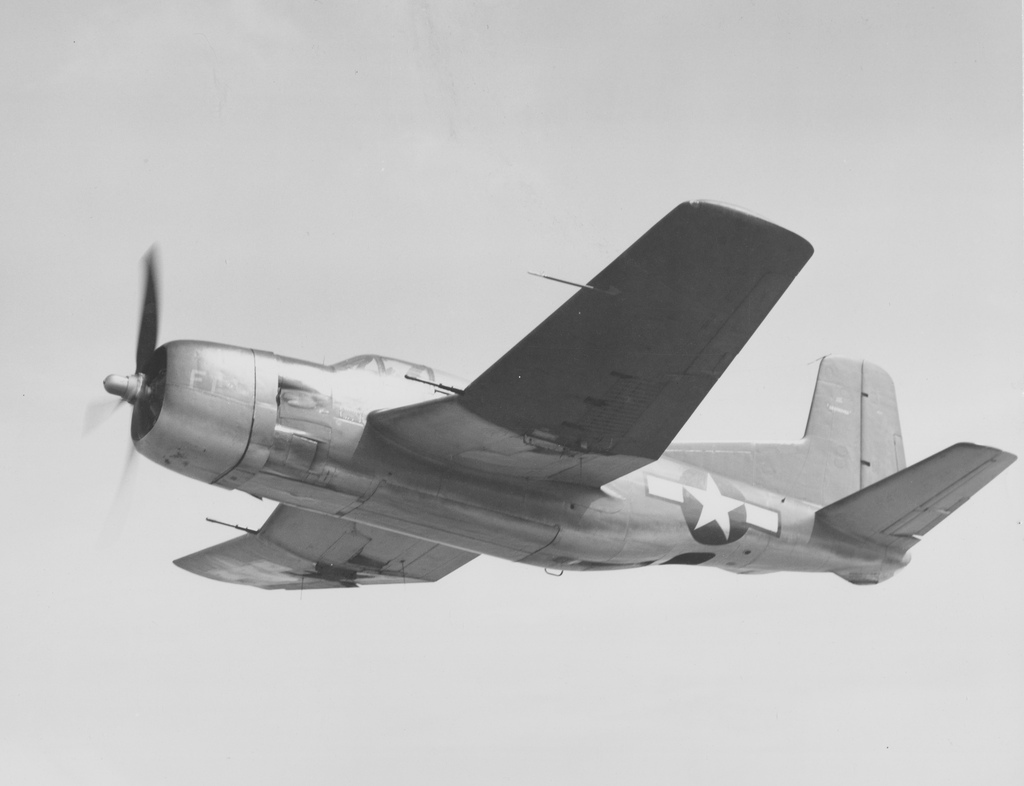
USN 248124 - BTD-1 BUNO 04963 AT PAX RIVER - 4 SEP 1944
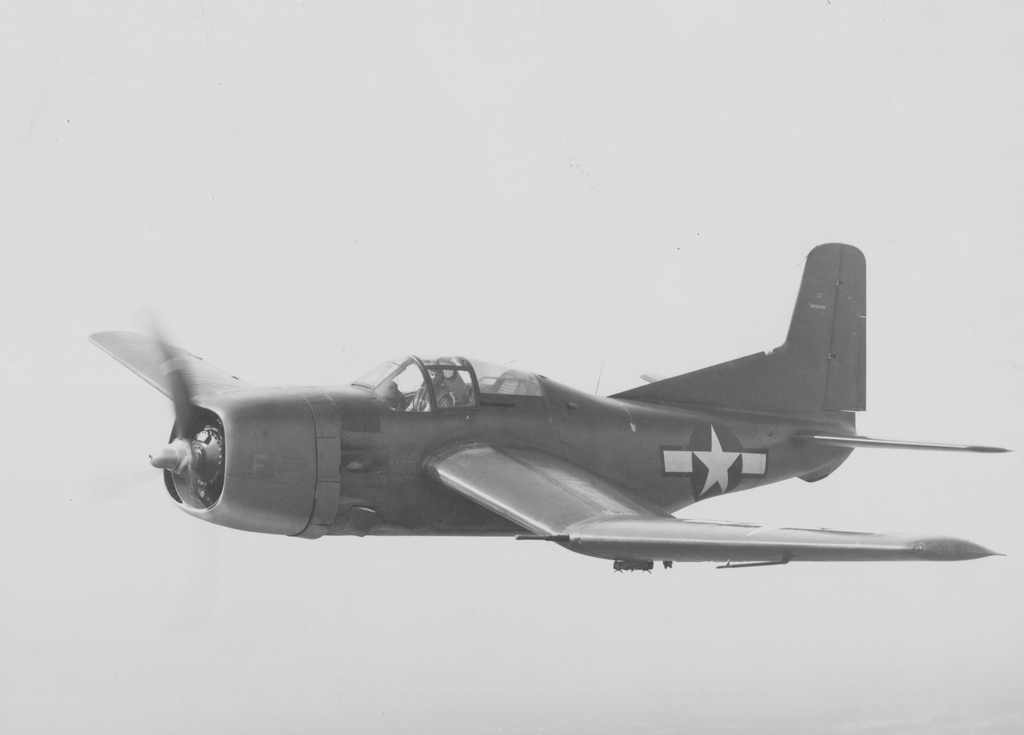
USN 248123 - BTD-1 BUNO 04963 AT PAX RIVER - 4 SEP 1944
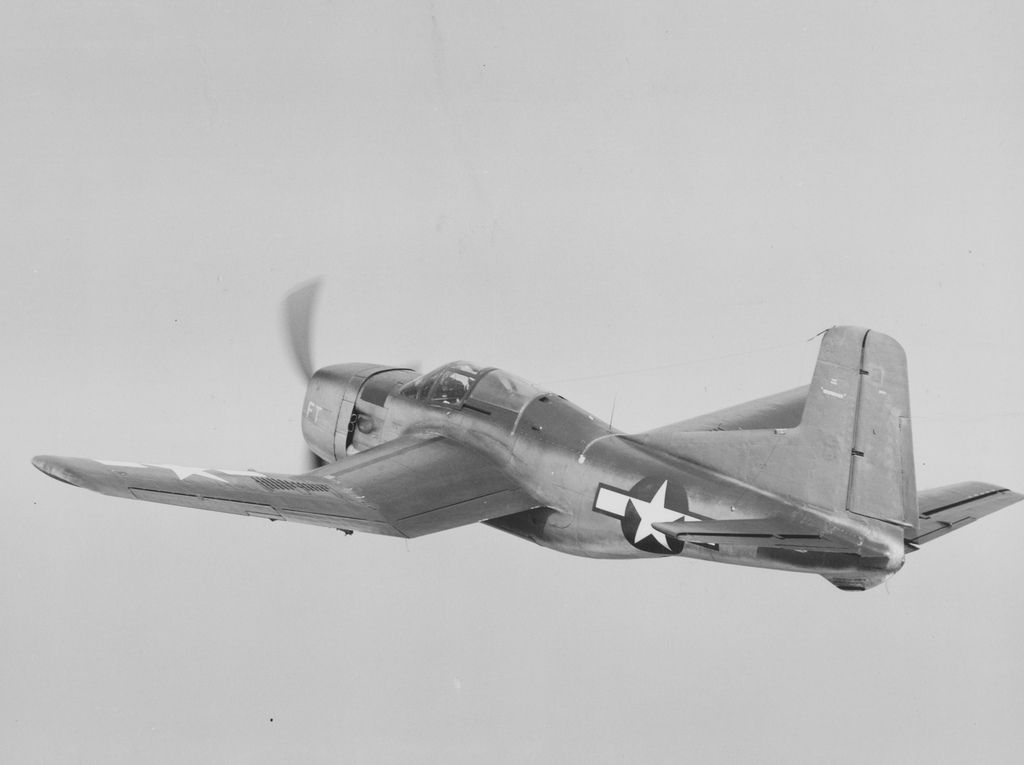
USN 248125 - BTD-1 BUNO 04963 AT PAX RIVER - 4 SEP 1944

USN 240144 - BTD-1 AT PAX RIVER - 25 JUL 1944
Per request. Two good looking airplanes (IMHO)
Beechcraft XA-38 Grizzly
Per Wiki:
The Beechcraft XA-38 Grizzly was a United States ground attack aircraft, fitted with a forward-firing 75 mm cannon to attack heavily armored targets. The first prototype flew on 7 May 1944 but after testing it became obvious it would not be ready for the projected invasion of Japan, and furthermore it used engines required by the B-29 Superfortress — which had priority - and so it was canceled after two prototypes had been completed.
The United States Army Air Forces awarded the Beech Aircraft Corporation a contract in December 1942 for two prototypes for their Model 28 "Destroyer". The requirement was for a powerful ground attack aircraft to replace the Douglas A-20 Havoc, with the ability to hit "hardened" targets like tanks and bunkers. This capability was achieved through a 75 mm cannon with 20 rounds, mounted in a fixed position on the nose as well as two .50 cal (12.7 mm) M2 Browning machine guns firing forward. Defensive armament consisted of remotely-controlled ventral and dorsal turrets, each armed with twin .50 cal (12.7 mm) machine guns. There were to be two crew members, a pilot and an observer/gunner in the rear cabin, using periscope sights to aim the guns.
On 7 May 1944, Beech test pilot Vern Carstens flew the XA-38 on its maiden flight from the company's Wichita airfield. The aircraft proved satisfactory in all respects and better than expected in some, including top speed.
During testing, the XA-38 prototypes were flown by U.S. Army pilots and serviced by military personnel, proving to be reliable and establishing a high level of serviceability.
The armament proved especially effective and had it not been for wartime priorities shifting in 1944, the aircraft would most likely have been ordered in quantity[citation needed], although the B-29 had priority for the Wright R-3350 engines. Instead, one prototype was scrapped and the other, intended for the USAF Museum, had an unknown fate.
General characteristics:
Crew: 2
Length: 51 ft 9 in (15.77 m)
Wingspan: 67 ft 4 in (20.52 m)
Height: 15 ft 6 in (4.72 m)
Wing area: 626 ft² (58.15 m²)
Empty weight: 22,480 lb (10,197 kg)
Max. takeoff weight: 35,265 lb (15,996 kg)
Powerplant: 2 × Wright R-3350-43 air-cooled radial engine, 2,300 hp (1,716 kW) each
Performance
Maximum speed: 370 mph (322 knots, 595 km/h) at 17,000 ft (5,180 m)
Range: 1,625 miles (1,413 nmi, 2,615 km)
Service ceiling: 29,000 ft (8,840 m)
Rate of climb: 2,600 ft/min (13.2 m/s)
Armament
Guns:
1 × T15E1 75 mm cannon (20 rounds)
6 × 50 caliber (12.7 mm) M2 Browning machine guns (2 forward-facing, 2 in ventral turret, 2 in dorsal turret)

Image 01: Beechcraft XA-38 (SN 43-14406). (U.S. Air Force photo)

Image 02: Beechcraft XA-38 (SN 43-14406). (U.S. Air Force photo)

Image 03: Beechcraft XA-38 (SN 43-14407, the second and last XA-38 built). (U.S. Air Force photo)

Image 04: Aft view of Beechcraft XA-38 (SN 43-14406). (U.S. Air Force photo)

Image 05: Front view of Beechcraft XA-38 with bombs loaded on four mount points. (U.S. Air Force photo)

Image 06: Front view of Beechcraft XA-38 (SN 43-14406) with external bomb racks installed. (U.S. Air Force photo)

Image 07: Front view of Beechcraft XA-38 with external fuel tanks mounted. (U.S. Air Force photo)

Image 08: Beechcraft XA-38 (SN 43-14407) in flight. (U.S. Air Force photo)

Image 09: Beechcraft XA-38 (SN 43-14407) in flight. (U.S. Air Force photo)

Image 10: Front view of Beechcraft XA-38 (SN 43-14407) in flight. (U.S. Air Force photo)

Image 11: Bottom view of Beechcraft XA-38 (SN 43-14407) in flight. (U.S. Air Force photo)

Image 12: Beechcraft XA-38 during ground vibration tests. Tests were set-up to determine natural frequencies excited during engine operation. (U.S. Air Force photo)
Douglas XSB2D-1 & BTD Destroyer
Per Wiki:
On 20 June 1941, the United States Navy placed an order with the Douglas Aircraft Company for two prototypes of a new two-seat dive bomber to replace both the Douglas SBD Dauntless and the new Curtiss SB2C Helldiver, designated XSB2D-1. The resulting aircraft, designed by a team led by Ed Heinemann, was a large single-engined mid-winged monoplane. It had a laminar flow gull-wing, and unusually for a carrier-based aircraft of the time, a tricycle undercarriage. It was fitted with a bomb bay and underwing racks for up to 4,200 lb (1,900 kg), while defensive armament consisted of two wing-mounted 20 mm (0.79 in) cannon and two remote-controlled turrets, each with two .50 in (12.7 mm) machine guns.[1]
The prototype first flew on 8 April 1943, demonstrating excellent performance, being much faster and carrying nearly double the bombload of the Helldiver, and orders for 358 SB2D-1s quickly followed. The U.S. Navy changed its requirements, however, wanting single-seat carrier-based torpedo/dive bombers without defensive turrets, and Douglas reworked the SB2D by removing the turrets and second crewman, while adding more fuel and armor, producing the BTD-1 Destroyer. The orders for SB2Ds were converted to BTD-1s, with the first BTD flying on 5 March 1944
The first production BTD-1s were completed in June 1944. By the time Japan surrendered in August 1945, only 28 aircraft had been delivered, and production was cancelled, along with other aircraft types that had been designed from the start as single-seaters, such as the Martin AM Mauler.[3] None saw combat action. In any event, Heinemann and his team were already working on developing the single-seat BT2D that became the Douglas A-1 Skyraider.
General characteristics:
Crew: One
Length: 38 ft 7 in (11.76 m)
Wingspan: 45 ft 0 in (13.72 m)
Height: 13 ft 7 in (4.14 m)
Empty weight: 11,561 lb (5,244 kg)
Max. takeoff weight: 19,000 lb (8,618 kg)
Powerplant: 1 × Wright R-3350-14 Cyclone 18 radial engine, 2,300 hp (1,715 kW)
Performance
Maximum speed: 334 mph (290 kn, 538 km/h) at 16,100 ft (4,900 m)
Service ceiling: 23,600 ft (7,195 m)
Armament
2 × 20 mm AN/M2 (.79 in) cannons, 200 RPG
Up to 3,200 lb (1,450 kg) of bombs in the bomb bay or two 1,947 lb Torpedos

Douglas XSB2D Destroyer left side

Douglas XSB2D Destroyer in flight

Douglas XSB2D Destroyer from below

Douglas XSB2D landing configuration

Douglas XSB2D Destroyer landing
BTD's

Douglas_BTD-1_NACA_Aug_1945

USN 408624 - BTD-1 BUNO 04970 - PAX RIVER - 10 MAY 1946

USN 408571 - BTD-1 BUNO 04963 AT PAX RIVER - 26 JUN 1944

USN 408623 - BTD-1 BUNO 04970 - PAX RIVER - 10 MAY 1946

USN 408570 - BTD-1 BUNO 04963 - PAX RIVER - 26 JUN 1944

USN 168021 - BTD-1 - 8 DEC 1943

USN 168025 - BTD-1 - 8 DEC 1943

USN 248126 - BTD-1 BUNO 04963 AT PAX RIVER 4 SEP 1944

USN 248127 - BTD-1 BUNO 04963 AT PAX RIVER - 4 SEP 1944

USN 240148 - BTD-1 AT PAX RIVER - 25 JUL 1944

USN 240147 - BTD-1 AT PAX RIVER - 25 JUL 1944

USN 248124 - BTD-1 BUNO 04963 AT PAX RIVER - 4 SEP 1944

USN 248123 - BTD-1 BUNO 04963 AT PAX RIVER - 4 SEP 1944

USN 248125 - BTD-1 BUNO 04963 AT PAX RIVER - 4 SEP 1944

USN 240144 - BTD-1 AT PAX RIVER - 25 JUL 1944
Re: XA-38 Grizzly & XSB2D Destroyer ...
Fri Jan 24, 2014 11:25 am
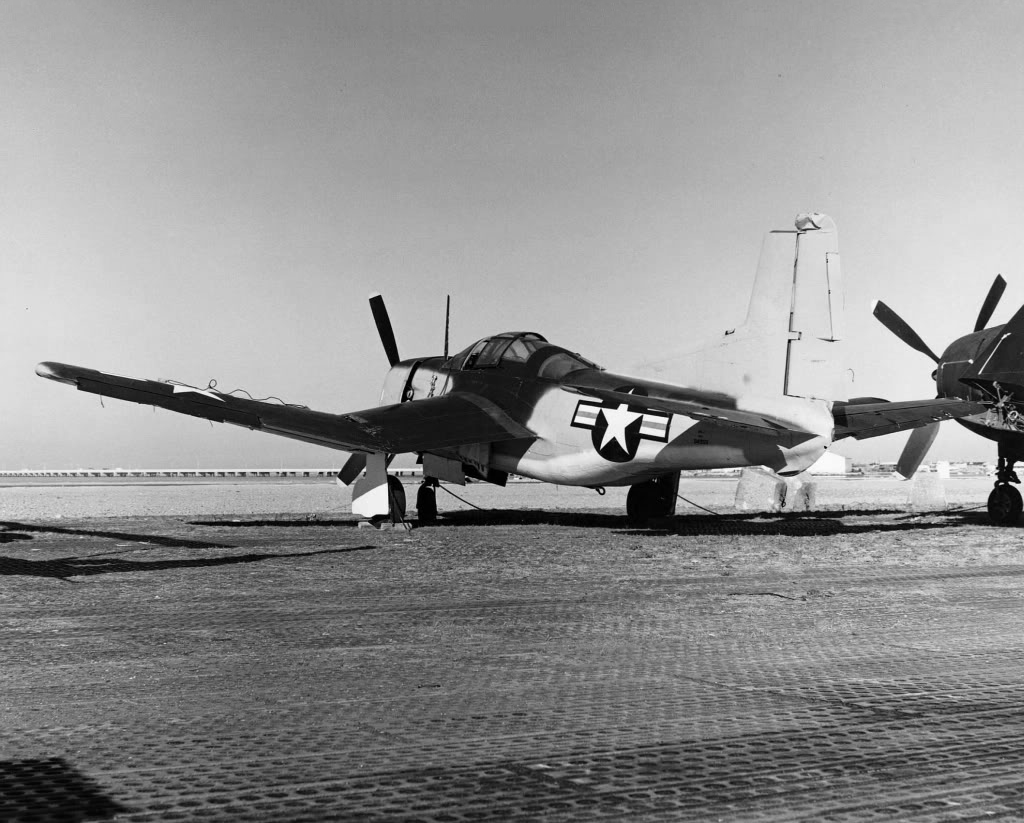
BTD-1 assigned to the Naval Air Rework Facility pictured on the flight line at NAS Norfolk VA
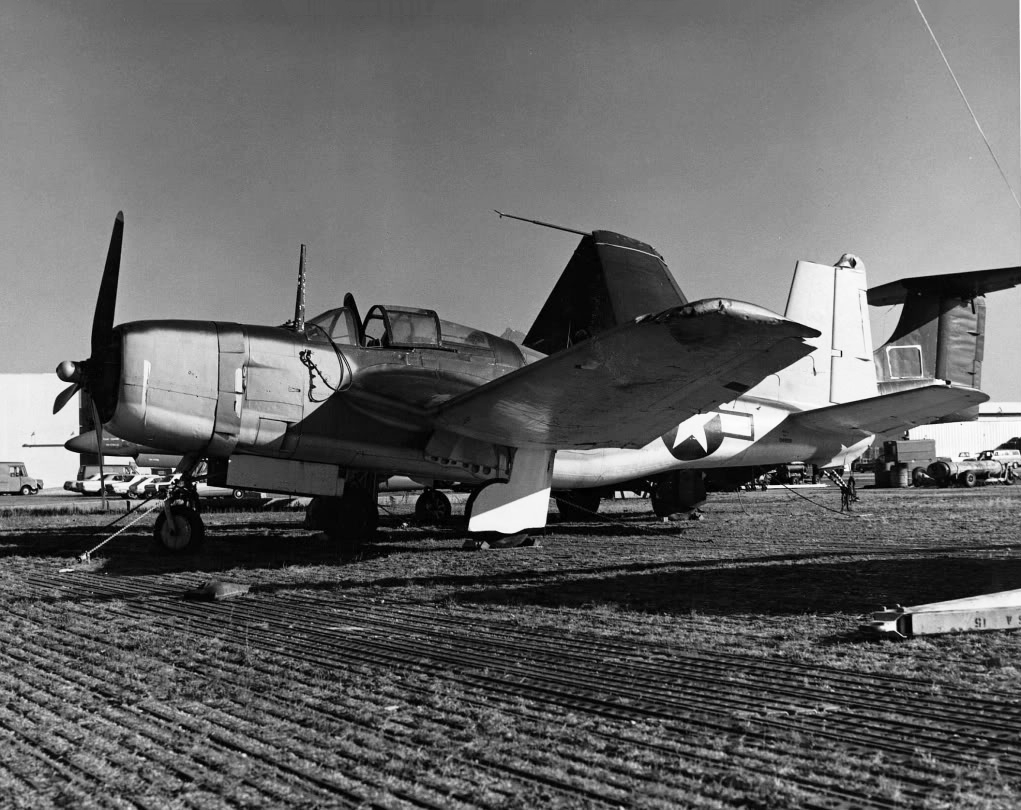
BTD-1 assigned to the Naval Air Rework Facility pictured on the flight line at NAS Norfolk VA

Douglas BTD-1 at NAS Alameda
Re: XA-38 Grizzly & XSB2D Destroyer ...
Fri Jan 24, 2014 3:25 pm
Interesting photo montage, especially the head on and tail on shots of the BTD-1 sitting among all those North American products at what appears to Grand Central Air Terminal in Glendale.
More really cool stuff!
More really cool stuff!
Re: XA-38 Grizzly & XSB2D Destroyer ...
Fri Jan 24, 2014 3:35 pm
My dad worked at NARF NAS Norfolk for 1959 to 1982 so I got to go down there and play around in a lot of aircraft. The BTD 1 was on the line near the old sea plane ramps in the early 70's. Never knew why it was there or what they did with it. For it to have survived that long I assume it had some use. Anyone know if it still exists ?
Re: XA-38 Grizzly & XSB2D Destroyer ...
Fri Jan 24, 2014 4:28 pm
Russ Blow wrote:My dad worked at NARF NAS Norfolk for 1959 to 1982 so I got to go down there and play around in a lot of aircraft. The BTD 1 was on the line near the old sea plane ramps in the early 70's. Never knew why it was there or what they did with it. For it to have survived that long I assume it had some use. Anyone know if it still exists ?
Still exists. The sole survivor was recently reported to be going to the Hixson Museum of Flight:
http://www.hixsonflightmuseum.org/
http://www.warbirds-eaa.org/news/2013%2 ... #TopOfPage
Re: XA-38 Grizzly & XSB2D Destroyer ...
Fri Jan 24, 2014 4:55 pm
here's a few photos of the survivor.
According to Wiki: BTD-1, BuNo 4959, Wings of Eagles Discovery Center, Elmira-Corning Regional Airport, Elmira, New York. This aircraft had long been in the Florence Air & Missile Museum collection until the museum's closing in 1997
http://svsm.org/gallery/btd1st/DSC00202
According to Wiki: BTD-1, BuNo 4959, Wings of Eagles Discovery Center, Elmira-Corning Regional Airport, Elmira, New York. This aircraft had long been in the Florence Air & Missile Museum collection until the museum's closing in 1997
http://svsm.org/gallery/btd1st/DSC00202
Re: XA-38 Grizzly & XSB2D Destroyer ...
Fri Jan 24, 2014 5:47 pm
The XA-38 looks like a Twin Beech on some serious steroids. I don't think I'd want to be on the business end of that 75mm!
Re: XA-38 Grizzly & XSB2D Destroyer ...
Fri Jan 24, 2014 6:37 pm
Does that Douglas XA2D that was in Idaho still exist?
Re: XA-38 Grizzly & XSB2D Destroyer ...
Fri Jan 24, 2014 9:52 pm
In the next to the last photo, what's the t-tail aircraft in the background?
Re: XA-38 Grizzly & XSB2D Destroyer ...
Fri Jan 24, 2014 11:46 pm
Elwyn--
Appears to be the Curtiss XF15C "Stingaree"...another USN bird that did not enter service. I vaguely recall that it too was in a museum collection at some point. NEAM, maybe?
S.
Appears to be the Curtiss XF15C "Stingaree"...another USN bird that did not enter service. I vaguely recall that it too was in a museum collection at some point. NEAM, maybe?
S.
Re: XA-38 Grizzly & XSB2D Destroyer ...
Fri Jan 24, 2014 11:48 pm
Steve T wrote:Elwyn--
Appears to be the Curtiss XF15C "Stingaree"...another USN bird that did not enter service. I vaguely recall that it too was in a museum collection at some point. NEAM, maybe?
S.
CURTISS F-15C compound power R2800 in front, Allis-Chalmers J-36 out back
Re: XA-38 Grizzly & XSB2D Destroyer ...
Fri Jan 24, 2014 11:54 pm
Elwyn wrote:In the next to the last photo, what's the t-tail aircraft in the background?
I'm guessing the Curtiss XF15C jet/prop hybrid.
http://en.wikipedia.org/wiki/Curtiss_XF15C
Apparently it still exists, and is on display at the Quonset Air Museum in Rhode Island (painted a rather garish "blue angel blue.")
SN
Re: XA-38 Grizzly & XSB2D Destroyer ...
Sat Jan 25, 2014 12:38 am
Thanks. I remember having seen photos of it now. Couldn't have pulled up the name from memory in a hundred years though.
Re: XA-38 Grizzly & XSB2D Destroyer ...
Sat Jan 25, 2014 11:57 am
Mark, thanks for posting another of your amazing photo threads.
While I was aware of it, I never truly understood how beautiful of an aircraft the BTD-1 was!
Mike

While I was aware of it, I never truly understood how beautiful of an aircraft the BTD-1 was!
Mike

Re: XA-38 Grizzly & XSB2D Destroyer ...
Sat Jan 25, 2014 1:09 pm
Here is the BTD-1 at Florence over the years.
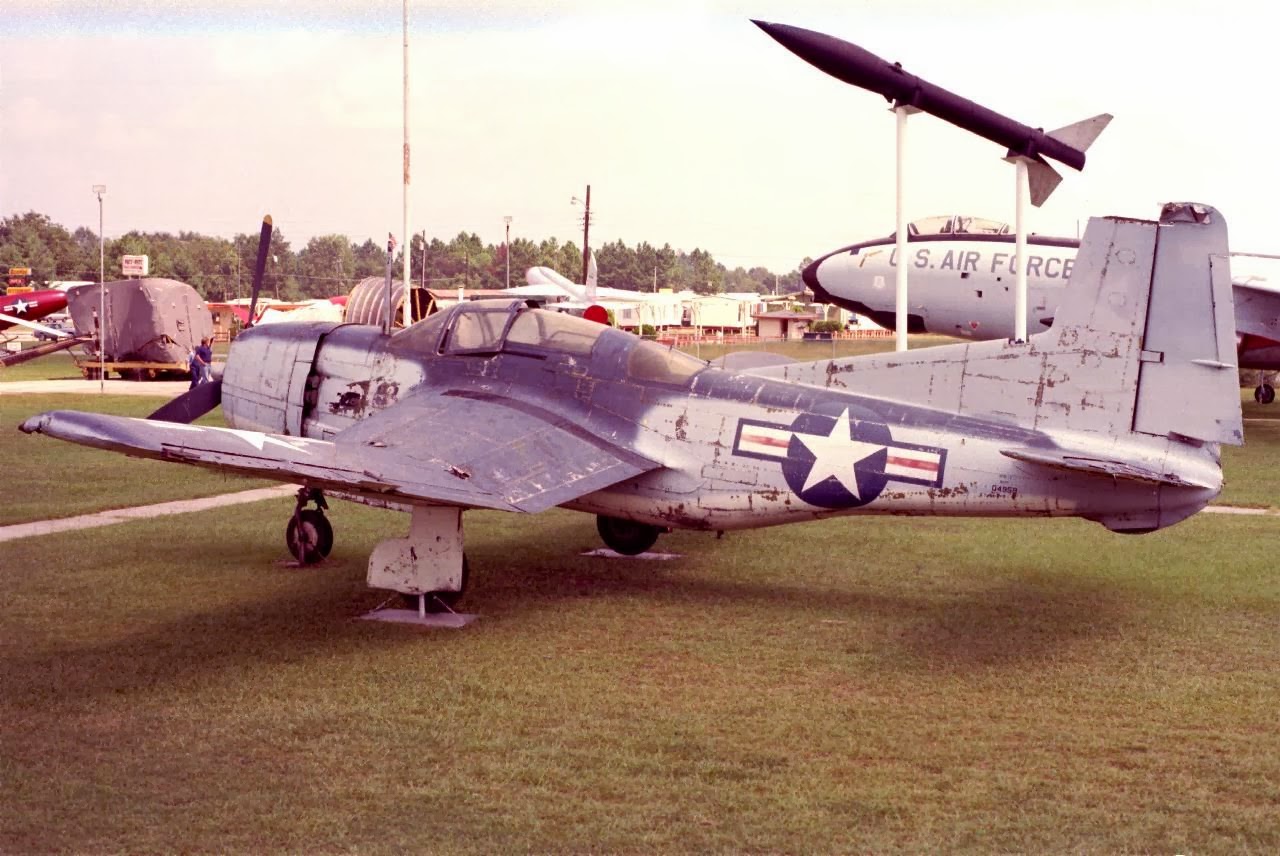
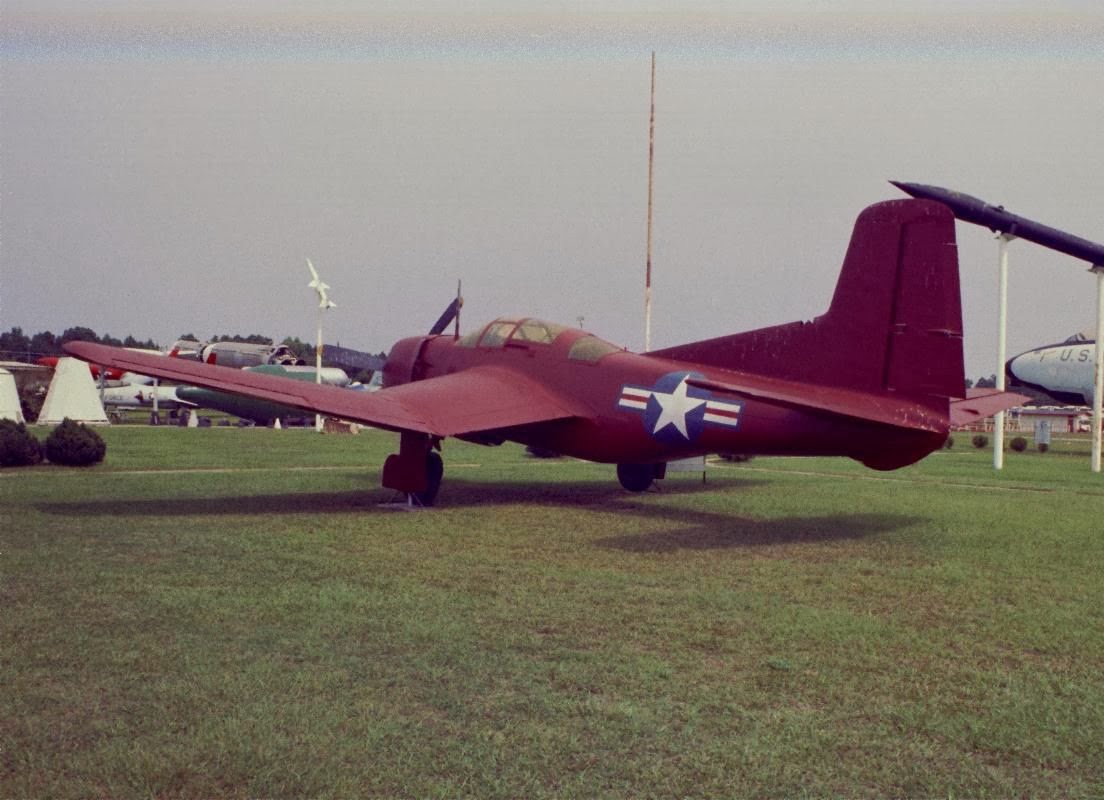
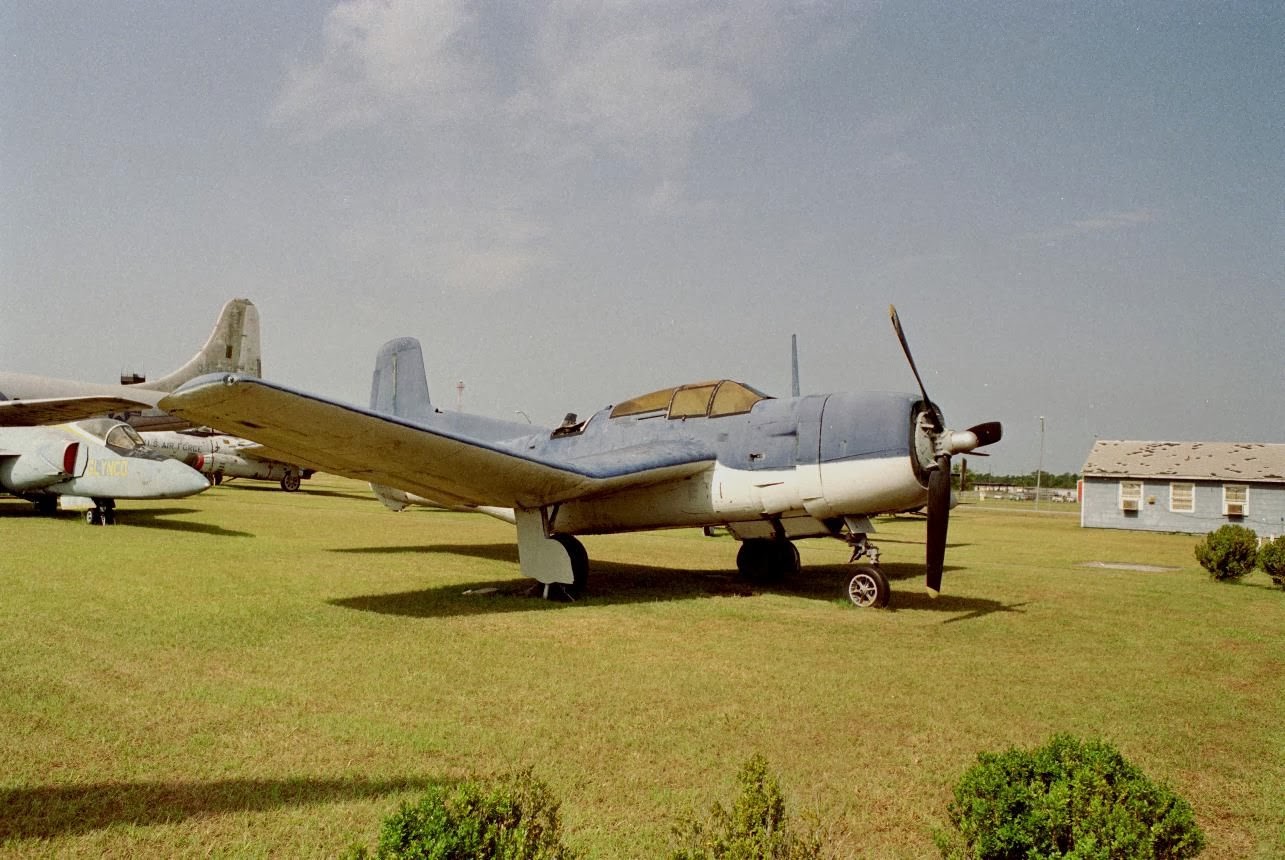
Mark Fidler
Mark Fidler